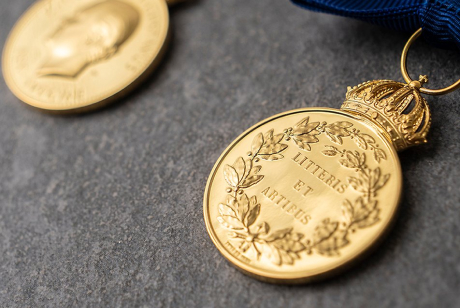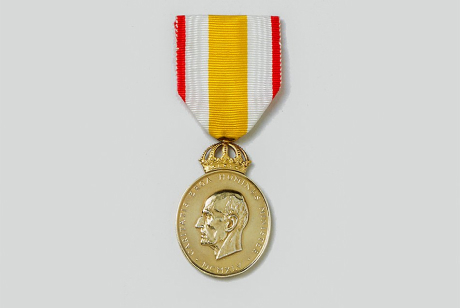Royal Medals
Medals are awarded mainly to Swedish citizens by the Head of State in recognition of outstanding contributions within society or to commemorate significant individuals or important events.
In contrast to the cruciform shape of orders, medals are round or oval. They often have an image in relief on the front, with text on the back indicating the reason why the medal was awarded. Apart from the Head of State, the Government awards some royal medals (see below). Medals are awarded by royal academies as well as semi-official and private associations.
The Seraphim Medal, His Majesty The King’s Medal and the Medal Litteris et Artibus are awarded twice a year, on Karl name day (January 28) and on Gustav name day (June 6).
The Prince Eugen Medal is awarded on Eugen name day (November 5) and the Prince Carl Medal is awarded on the 1st of December, the day on which it was instituted.
Moreover, the King awards Royal Jubilee Commemorative Medals. This was done for the wedding of the Crown Princess and for the 50th anniversary of H.M. the King's ascension to the throne.
Government Medals
Apart from the above, the Government awards four Royal medals:
- The Medal Illis quorum meruere labores (For Those Whose Labors Have Deserved It)
- The Medal För berömliga gärningar (For Noble Deeds)
- The Medal För medborgerlig förtjänst (For Civic Merit)
- The Medal För omsorgsfull renvård (For Diligent Reindeer Husbandry)
Read more about the Government medals and how proposals are made:
Yet another medal that is regarded as a Government medal is part of the award För nit och redlighet i rikets tjänst (For Zeal and Devotion in the Service of the Realm), awarded for 30 years of service as a state employee, 25 years of service on retirement. Read more in the Government Act and the Swedish Agency for Government Employees:






